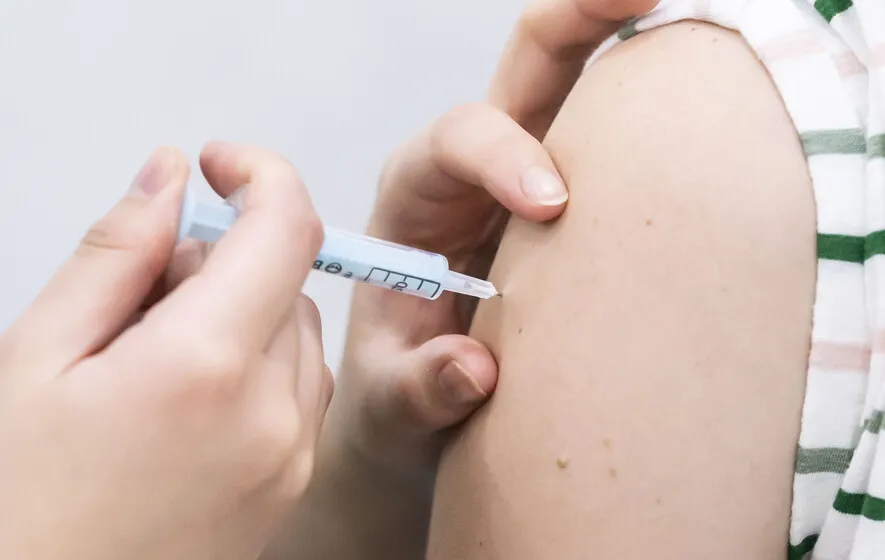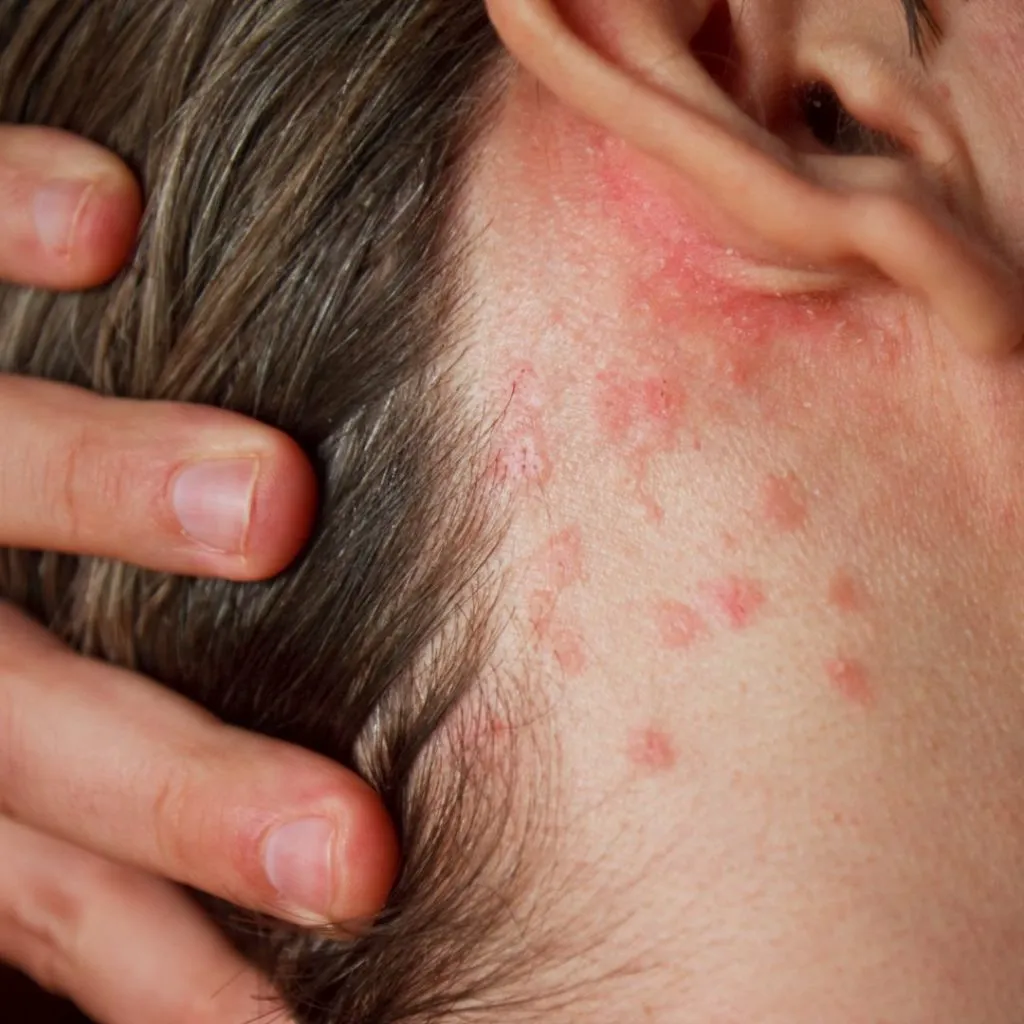Table of Contents
ToggleDon't Let Shingles Dim Your Life - Know the Signs, Get Treatment, Feel Better Faster
Shingles, also known as herpes zoster, is a reactivation of the varicella-zoster virus, the same virus that causes chickenpox. After a bout of chickenpox, the virus lies dormant in your nerve roots. Years later, under certain circumstances, it can awaken, causing a painful rash and a variety of other uncomfortable symptoms. This article dives deep into shingles, exploring its causes, the tell-tale signs, and the various treatment options available.
Understanding the Cause: Why Does Shingles Occur?
The culprit behind shingles is the varicella-zoster virus. When you contract chickenpox as a child, your body fights off the active infection. However, the virus doesn’t completely vanish. It goes into hiding within your nerve tissue, specifically the sensory nerve roots near your spinal cord and brain stem. These roots are responsible for transmitting sensory information like touch and pain.
Years later, under certain conditions, the dormant virus can reactivate, leading to shingles.

Risk Factors: Who’s More Likely to Develop Shingles?
While anyone who has had chickenpox can develop shingles, certain factors increase the risk:
- Age: Shingles becomes more common with age, especially after 50. The risk continues to rise as you get older.
- Weakened Immune System: A compromised immune system due to illness, medications like steroids, or chronic conditions like HIV/AIDS can make you more susceptible to shingles reactivation.
- Stress: Severe emotional or physical stress can weaken your immune system, creating an environment for the virus to reactivate.
- Certain Medical Conditions: Medical conditions like cancer, especially after chemotherapy, and autoimmune diseases can increase your risk of shingles.
The Burning Truth: Symptoms of Shingles
The hallmark symptom of shingles is a painful rash that typically appears in a band-like pattern on one side of your face or body. This rash follows the path of the affected nerve, often on your torso, back, or around the eyes.
The rash progresses through stages, typically following this pattern:
- Burning, Tingling, or Itching: Before the rash appears, you might experience a burning sensation, tingling, or intense itching in the area where the rash will develop. This can last for several days or even weeks.
- Painful Rash: A red, blistering rash then emerges, often accompanied by intense pain that can be burning, stabbing, or throbbing. The blisters may ooze fluid and eventually crust over before healing.
- Postherpetic Neuralgia (PHN): In some cases, after the rash heals, you might experience ongoing nerve pain in the affected area. This complication, known as postherpetic neuralgia, can be debilitating and persist for months or even years.
Beyond the Rash: Other Shingles Symptoms
While the rash is the most prominent symptom, shingles can also cause:
- Fever: A low-grade fever is common, especially in the initial stages.
- Headache: You might experience a general headache or a throbbing pain on the same side of the head as the rash.
- Fatigue: Feeling tired and run down is a frequent complaint with shingles.
- Muscle Weakness: Weakness or numbness in the affected area can occur.
- Sensitivity to Touch: Even the slightest touch on the rash can be excruciatingly painful.
Seeking Relief: Treatment Options for Shingles
Early diagnosis and treatment of shingles are crucial for a faster recovery and to minimize the risk of complications like PHN. If you suspect you have shingles, consult your doctor immediately.
Here’s a breakdown of the treatment options available:
- Antiviral Medications: Medications like acyclovir, valacyclovir, or famciclovir are the mainstay of shingles treatment. They work by stopping the virus from multiplying, thereby shortening the duration and severity of the infection. Early initiation of these medications within 72 hours of the rash appearing is most effective.
- Pain Management: Managing the often-intense pain associated with shingles is crucial. Your doctor might prescribe pain relievers like ibuprofen or acetaminophen, or stronger medications for severe pain. Topical pain relief creams containing lidocaine or capsaicin can also provide localized relief.
- Antidepressants: In some cases, certain antidepressants can help manage nerve pain associated with shingles, particularly PHN.
- Calamine Lotion: Soothing the itching caused by the rash can be achieved with calamine lotion or other topical anti-itching medications.
- Rest: Getting plenty of rest allows your body to focus its energy on fighting the infection and healing.

Preventing the Burn Through Vaccination
The good news is that a shingles vaccine can significantly reduce your risk of developing shingles and its complications. There are two FDA-approved vaccines available:
- Shingrix: This two-dose vaccine is recommended for adults 50 years and older, regardless of whether they had chickenpox or a previous shingles infection. The doses are typically administered 2 to 6 months apart.
- Zostavax: This is an older one-dose vaccine that was previously recommended for adults 60 years and older. However, Shingrix is now preferred due to its higher efficacy in preventing shingles and PHN.
The Centers for Disease Control and Prevention (CDC) recommends Shingrix vaccination for all adults 50 years and older, even if they are unsure if they have had chickenpox. Vaccination is especially important for individuals with weakened immune systems due to illness or medications.
Living with Shingles: Additional Tips for Managing the Condition
While there’s no cure for shingles, several strategies can help manage the discomfort and promote healing:
- Cooling Compresses: Applying cool compresses to the rash can provide temporary relief from itching and burning.
- Loose-Fitting Clothing: Wearing loose-fitting, comfortable clothing that doesn’t irritate the rash can be helpful.
- Stress Management Techniques: Techniques like meditation, relaxation exercises, or yoga can help manage stress, which might worsen shingles symptoms.
- Maintain a Healthy Lifestyle: A balanced diet, regular exercise, and adequate sleep can support your immune system and overall well-being during the healing process.
When to See a Doctor
If you experience any of the following symptoms, seek immediate medical attention:
- Severe pain that is not controlled by medication
- Signs of infection around the rash, such as redness, swelling, or pus
- Vision problems if the rash affects the eye
- Difficulty balancing or weakness on one side of your face, which could indicate facial nerve involvement
Conclusion: Knowledge is Power
Shingles, while painful, is a manageable condition. By understanding the causes and symptoms, you can be proactive about seeking early diagnosis and treatment. Remember, vaccination can significantly reduce your risk of developing shingles altogether. Talk to your doctor about your risk factors for shingles and whether vaccination is right for you. With knowledge and proper care, you can effectively manage shingles and get back to enjoying life.
Note: This article is for informational purposes only and should not be interpreted as medical advice. Always consult a healthcare professional for diagnosis and treatment of shingles.
